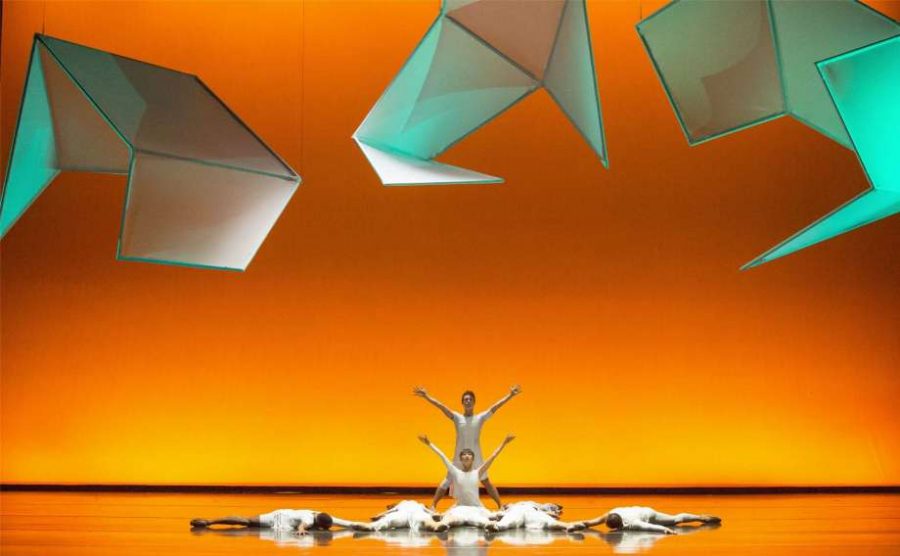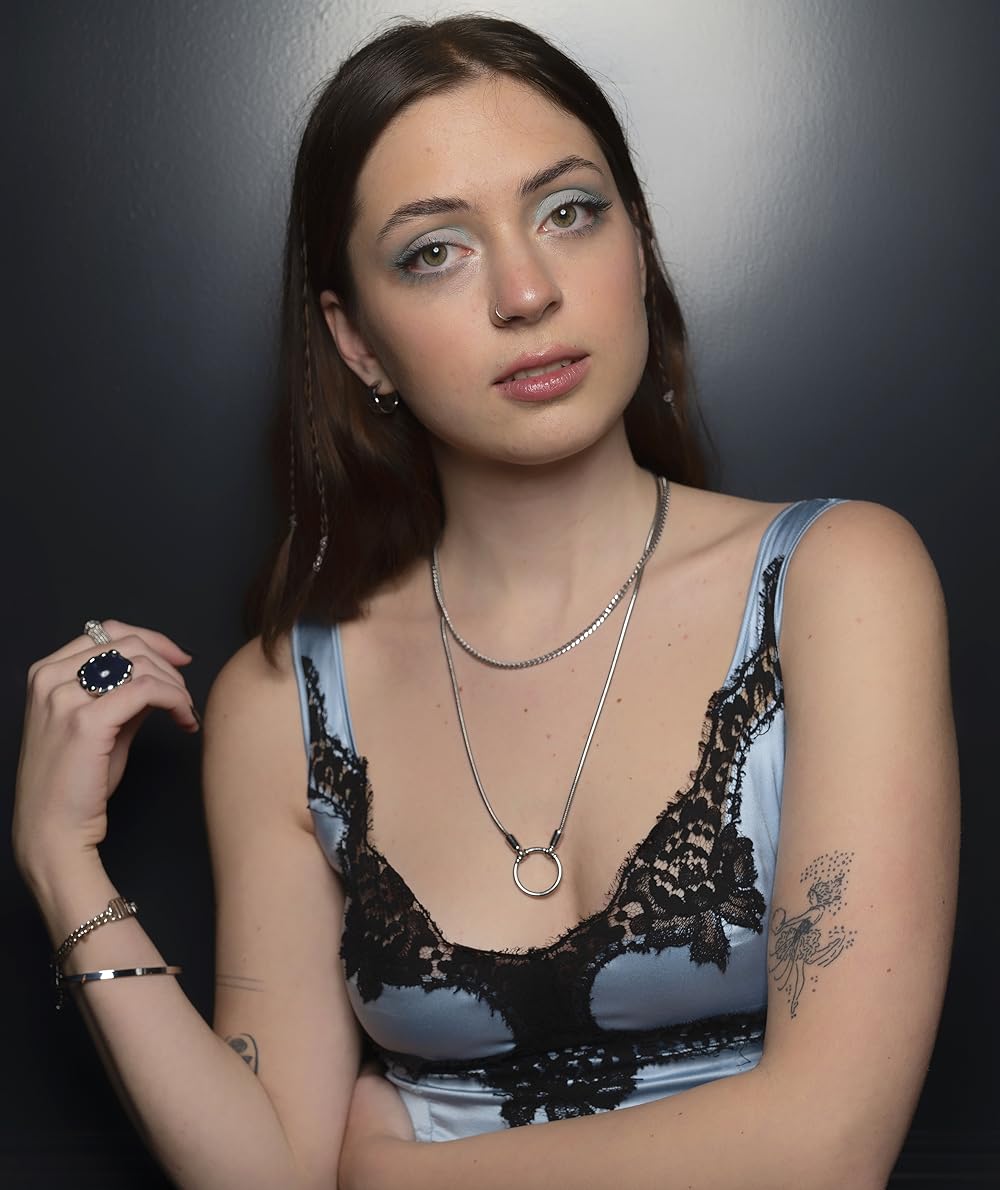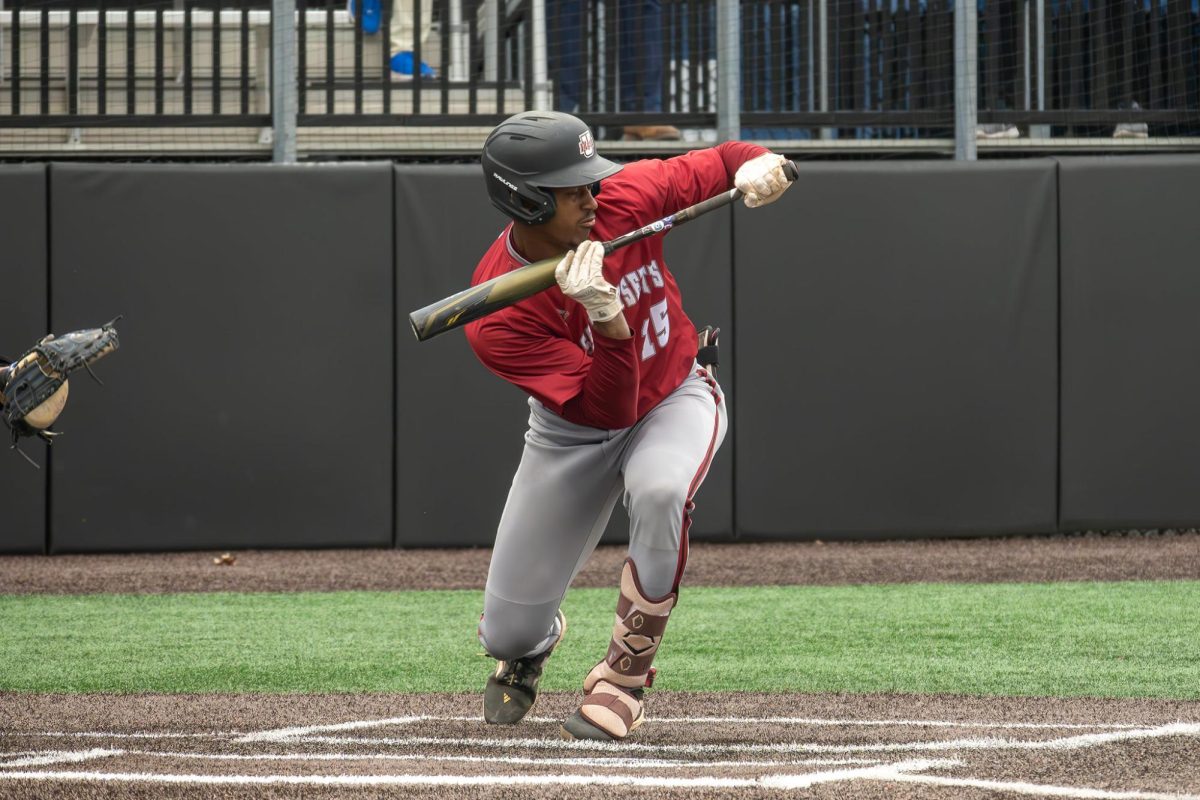The Fine Arts Center at the University Massachusetts welcomed Jessica Lang Dance on Thursday, February 8, to an expectant and plentiful audience. Headed by artistic director Jessica Lang, the company’s mission is to “present and perform dance works around the world that immerse global audiences in the beauty of movement and music.” There was no shortage of richness for that night’s lineup, featuring five pieces of work: “Tesseracts of Time,” “The Calling” (excerpted from “Splendid Isolation II”), “Thousand Yard Stare,” “WHITE” and “i.n.k.”
“Tesseracts of Time” is a collaboration with architect Steven Holl, examining the “relationship of architecture to the ground.” Fittingly, the four scenes within this piece are “Under,” “In,” “On” and “Over.” Each interacts with different structural environments, ranging from a bare stage, to a full-stage projection of sprawling structures, to physical cloth-and-wire shapes like adult-sized jungle gyms on the style of modern art.
Within the first scene, the movements are just as varied as the stage settings: “Under” opens the show spryly and rhythmically, the nine dancers stamping, clapping and slapping—becoming a body of percussion as they move together in arresting synchrony. Nothing graces the stage other than the dancers, and they are more than capable of filling it.
“In” is the scene with a multimedia twist. Solo or duo dancers slink and stretch in front of a digitally projected backdrop of surrealistic walls and alcoves, stage-spanning structures and puzzle piece-like buildings reaching out their hands but never touching. Movement in the background video takes on a topsy-turvy aspect as well, with mirrored versions of the dancers dancing upside down, moving in and out of gaps in the dreamscape. The concept behind “In” is novel, truly—there’s much to be considered about the interplay of spaces and the presentation of it on a stage. However, the backdrop is flat, and one can’t fully feel at ease with the divide between the real-life dancers and the uncanny, valley-esque, two-dimensional dancer. The combination of discordant sounds of scratchy piano strings and wistful, if not haunting, movement is evocative, but just as it can arouse wonder and pensiveness, it can also arouse feelings of confusion, and satisfaction is not quite reached.
“On” and “Over” explore the same architectural concept but are considerably more richly textured. Here, oddly-angled structures take physical shape on stage. Imagine eight-foot shapes bent and folded like trapezoids broken apart, and prisms come undone (not unlike the actual building wherein this performance was housed)—all made of white cloth stretched over wire frame. In these two final scenes, dancers playfully move not only across the stage but in, around and over these structures. The physics aren’t mind-bending like “In” is; the fact that the performers are actually able to climb onto the structures, hide in their gaps and lie across the frames makes it a cleverly-layered construction to enjoy.
Lang’s artistry is not only in dance, but in the excitement of other senses and sensations as well. Two other digitally projected pieces in the latter half of the show after the second intermission, “WHITE” and “i.n.k.,” take musical delicacy and eye-catching play to another level. “WHITE” is entirely in video form—perplexing (and perhaps disgruntling), seeing as the audience paid to see, well, a live performance. I could not change my mind faster once the dancers appeared on stage. Speed and dialogue was manipulated with music; bodies were clad in white, swirling in slow-motion to a building string composition, comically scurrying on tiptoes to the bouncy tinkles of a piano. The result is an intriguing and delightful mingling of calculated timing, perspective and musicality.
“i.n.k.” has a similar impishness and modern-media twist. The images here appeared as droplets of black ink, and the sounds are plopping drops; I was reminded of rainwater exhibits in children’s museums. This spirit also feeds the movements of the dancers; the emotive narrative is hard to pin down in this piece. That is, the feelings displayed are eclectic. Dancers can be seen in crisp, alert movement, then a duet of longing, then a quirky, bobbing attitude. The duet within the piece takes its time to climax (the dancers are a tad too lingering with their languor, I think), but the rest of “i.n.k” is well-paced and various in choreography and visual icons.
As for “The Calling,” it doesn’t fit in thematically with the architectural abstraction of “Tesseracts of Time” nor with the graphic-aural-movement interplay of “WHITE” and “i.n.k.,” but it is a gem in any case, particularly because it was the only solo piece of that night. If you have seen even a single advertisement for that night’s performance—which you certainly have if you have so much as stepped into any dining hall on campus in the past several weeks—it is the act that entails the snapshot of a dancer in a splendidly luxuriant white dress, back arched and arms thrown out with an almost palpable energy. Soloist Eve Jacobs moves fearlessly within the boundaries of her costume (even more unbelievable in person, I assure). She showcases under-noticed strength in the stunning white dress. The finesse of her arms, back and head, and the underlying control of her legs sweep with the holy sound of hymn “O Maria, Stella Maris” beautifully, although the placing of “The Calling” unfortunately puts it in a position of being overshadowed in that night’s program.
In between “Tesseracts of Time” and “The Calling,” which compose the first and second acts, and “WHITE” and “i.n.k.,” which are in the last, is the “piéce de résistance.” This work is lauded by many for its emotion and sincerity in dealing with a particularly raw topic: combat and its effects on veterans. Certainly, Lang does not shy away from it; rather, she reaches, with sensitivity and self-awareness into the experiences of those who have served to build a true-to-life representation of hurt, comfort, camaraderie and transformation through movement and sound. Like the rest of her work that night, much can be said and critiqued and ranted and raved; but for “Thousand Yard Stare,” a complexly human piece underwritten by Geoff Fallon, I shall just let this particular scene speak for itself.
First, a bit of context: “Line” is common movement jargon used in many forms of dance to describe the ideal geometry of the body. It must be noted, though, that the term “line” does not necessarily denote a linear form. I make this distinction because the “line” that stole the show, that conveyed the tender essence of “Thousand-Yard Stare,” is actually a curve. It is the simple cupping of an arm, a holding of a head and not a tautly-extended leg or wow-worthy stretch that steals the show. The curve is the perfect shape for sharing risk, trust, fear, exhaustion, a plea, warmth, love. A breath-catching example: picture eight of the nine dancers, seated on the floor within each other’s bent legs, curved forward against one another. They contract and stretch, like vertebrae closely stacked, rippling in unison. With arms outstretched and hands reaching, they swirl their torsos to scoop a circle in the air around them, and then compact again. Over and over they sway, movements true to the rhythm and true to each other’s bodies.
Distant from their unison, a dancer sprawled on the floor crawls toward them in a way that evokes images of barbed wire, mud and bruised knees. She reaches—and advances—until the dancers heading the line effortlessly scoop her up over their heads. Still in their seated position, they pass her along, a curled, fetal-like figure, into the middle of the line where a space opens between two people, and she slides in seamlessly.
We, as audience members, know that that space was not there before. We witnessed the closeness of the dancers curved over each other, the tightness of their movement dictated by something internal. But then, there she is, among them, absorbed in one greater body, with such quiet gentleness. It is as if that space were always there, as if it was always made for her, as if they had always been prepared to take her in among them.
It incites a longing that we can only hope to never experience ourselves. I can’t speak of combat in any sense as it relates to this work, but I hope that “Thousand Yard Stare” resonates as a tribute to sacrifice, and not a dirge for the sacrificed.
Again, the entire course that Jessica Lang Dance serves is exquisite, and, even in its (few) emotional lulls and disconnects, it can very much be appreciated as breathlessly bold artistic ventures. Lang and her dancers are expressive in multitudes and so finely attuned not only with each other as they perform on stage, but also keenly so with the audience. Most strikingly, each exploration represented by “Tesseracts of Time,” “The Calling,” “Thousand Yard Stare,” “WHITE,” and “i.n.k.” have a motive clearly fueling them.
Yet, I feel like this all has been foreshadowed before I even saw the curtain rise. In the pre-show talk before it began, Jessica Lang made this succinct and poignant comment on “Thousand Yard Stare”—that it is the impetus for how all art is birthed, and in particular, the cause for which her work is made: “It’s not just one war, it’s not even about the enemy. It’s about the humanity and what we all go through, it’s about courage and the bravery in our bones.”
Sam Wong can be reached at [email protected].



















